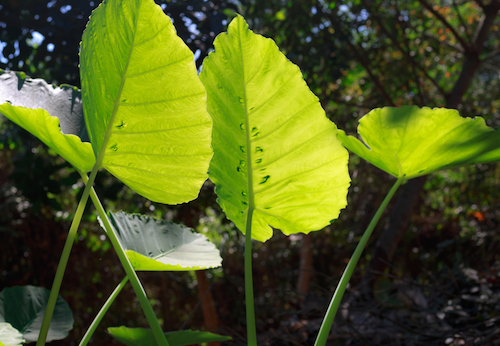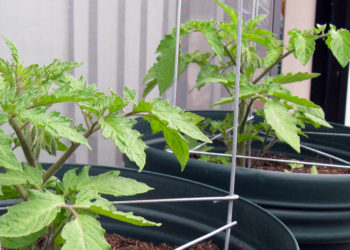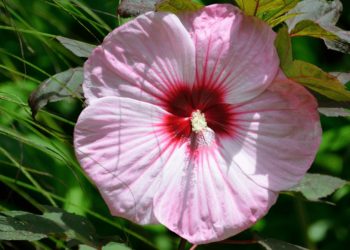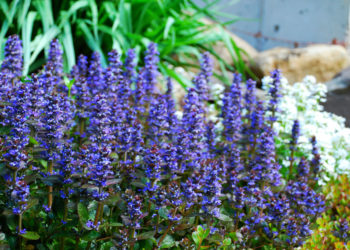Colocasia plants are huge, showy foliage plants that add interest to a summer garden. With their enormous triangular leaves, it’s not hard to see why they’re also commonly called ‘elephant ears’. If you’re ready to add colocasia (kol-oh-KAY-shah) to your garden, but not quite sure how, here are some easy tips on how to grow colocasia plants.
Getting to Know Colocasia: A plant with deep roots
Considered to be one of the oldest cultivated plants in the world, in their country of origin these annual plants are grown as perennial plants mainly for the roots, called taro. (In Hawaii, the roots of elephant ear plants are the main ingredient in the popular dish called Poi.) But in North America this tropical beauty is grown for ornamental use simply because the heart or arrow-shaped leaves are showy and beautiful. The large (8-60 in.) leaves in dark, glossy green or dark plum, and the green, dark red or black stems grow from 3-7 ft. tall.
How to Grow Colocasia Plants
Temperature Matters
Native to Polynesia and S.E. Asia, these tropical beauties grow best in temperatures of 68-86 degrees F. Be aware of any temperature fluctuations in your area, as any exposure to 50 degrees or below may damage them.
Planting
Colocasia are grown from bulbs. Before you plant, you’ll want to make sure to use soil that is rich in organic matter. These foliage stars grow best in soil that’s loose and well draining. Plant the bulbs about 2 – 3 inches below the soil, and lay the bulb on its side. Space them 2 foot apart. Colocasia like wet soil, so keep the soil moist and keep the plants mulched.
Care
These are tropical plants, which means they do best in full sun to part shade. They are slightly high maintenance (or medium maintenance), and they do like the soil to be moist at all times. To help with this, you can keep it mulched with organic matter, like bark or pine needles. If you grow them in zones 8 – 11, they’ll survive the winter like a perennial. If your zone is 5 or cooler, you can treat them as an annual plant. You can fertilize ever 3 -4 weeks with a general fertilizer.
Colocasia Issues
Colocasia are vulnerable to a few pests and diseases, chief among them are aphids, whiteflies, mosaic virus, root rot. They are considered invasive in some areas; so check with your local nurseryman. And a word of caution when handling them: the sap will irritate skin, so be careful handling the stems.
Propagation and uses
You can propagate colocasia by dividing the roots in winter or early spring (provided you are growing in an area where they survive the winter). Popular companion plants include caladium, coleus, and licorice plant. The uses for colocasia are boundless; they are a great choice for interesting borders, grow well in containers and accessorize a water garden perfectly.
Happy gardening!





No Comments